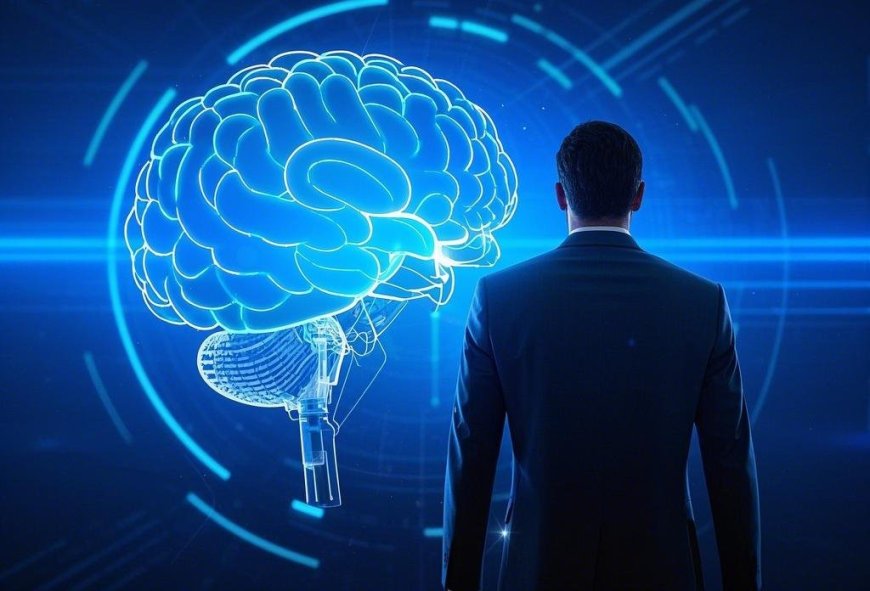The Dawn of Neuro-Integrated Interfaces: A New Frontier in Technological Advancement
This article explores Neuro-Integrated Interfaces (NIIs), a groundbreaking technology enabling direct brain-to-technology communication, with transformative applications in healthcare, human performance, and immersive experiences.

The relentless march of technological progress constantly reshapes our world, introducing innovations that once resided solely in the realm of science fiction. While established fields like artificial intelligence and biotechnology continue their rapid evolution, a new area is beginning to emerge with the potential to revolutionize human-computer interaction and unlock unprecedented capabilities: Neuro-Integrated Interfaces (NIIs). This nascent field, while still in its early stages of development, promises a future where technology seamlessly integrates with the human nervous system, offering a profound shift in how we interact with machines and with each other.
Neuro-Integrated Interfaces represent a significant departure from traditional input methods like keyboards, touchscreens, and voice commands. Instead of relying on external devices to translate our intentions into digital actions, NIIs aim to establish a direct communication pathway between the brain and external systems. This intricate connection allows for the decoding of neural signals, translating thoughts, intentions, and even emotions into actionable commands for software and hardware. Conversely, NIIs also hold the potential to deliver information directly to the nervous system, bypassing conventional sensory pathways.
The development of NIIs draws upon a convergence of several scientific disciplines, including neuroscience, microelectronics, materials science, and advanced signal processing. At its core, the functionality of NIIs hinges on the ability to:
- Record neural activity: This involves using highly sensitive sensors to detect the electrical and chemical signals generated by neurons in the brain or peripheral nervous system.
- Decode neural signals: Sophisticated algorithms and machine learning techniques are employed to interpret the complex patterns of neural activity and correlate them with specific intentions or information.
- Stimulate neural pathways: In the bidirectional potential of NIIs, targeted electrical or biochemical stimulation can be used to deliver information or evoke specific responses within the nervous system.
The potential applications of NIIs are vast and span numerous sectors, holding the promise to address some of humanity's most pressing challenges and enhance our capabilities in profound ways. Consider these possibilities:
- Revolutionizing Healthcare:
- Developing advanced prosthetics controlled directly by thought, offering amputees unprecedented dexterity and control.
- Creating new therapies for neurological disorders like Parkinson's disease, epilepsy, and paralysis through targeted neural stimulation.
- Enabling innovative diagnostic tools for early detection and monitoring of brain conditions.
- Transforming Human-Computer Interaction:
- Allowing for intuitive and instantaneous control of digital devices and software through thought alone.
- Facilitating seamless communication for individuals with speech impairments.
- Creating immersive and interactive virtual reality experiences that blur the lines between the physical and digital worlds.
- Enhancing Human Performance:
- Developing assistive technologies to augment cognitive abilities, such as memory and focus.
- Creating more efficient and intuitive interfaces for complex tasks in fields like aerospace and robotics.
- Potentially unlocking new forms of communication and collaboration.
However, the development of Neuro-Integrated Interfaces is not without significant challenges. The complexity of the human nervous system presents a formidable hurdle. Accurately and reliably recording and decoding neural signals requires advancements in sensor technology and algorithms. Furthermore, ensuring the long-term biocompatibility and safety of implanted NII devices is paramount. Ethical considerations surrounding the potential for misuse, privacy concerns related to brain data, and the potential for exacerbating existing societal inequalities must also be carefully addressed as this technology progresses.
Looking ahead, the field of Neuro-Integrated Interfaces is poised for significant growth. Ongoing research is focused on developing less invasive or even non-invasive methods for recording neural activity, improving the accuracy and reliability of signal decoding algorithms, and exploring the therapeutic potential of targeted neural stimulation. The fusion of advancements in nanotechnology, artificial intelligence, and computational neuroscience will be crucial in overcoming current limitations and realizing the full potential of this groundbreaking technology.
In conclusion, Neuro-Integrated Interfaces represent a compelling new frontier in technological development. While still in its nascent stages, the potential for transformative impact across healthcare, human-computer interaction, and beyond is undeniable. As research progresses and ethical considerations are carefully addressed, NIIs may well herald a new era of seamless integration between humans and technology, fundamentally changing how we live, work, and interact with the world around us.

